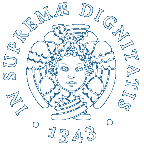2022 - 2025
In corso
Progetti di AteneoArcheologia Beni Culturali Informatica
Gabriele Gattiglia (PA – Metodologia della Ricerca Archeologica)
Francesca Anichini (TA - Docente di Archeologia Contemporanea - Università di Pisa) Mirco Carrattieri (Direttore generale- ’Istituto Nazionale “Ferruccio Parri” Milano) Costanza Coppini (Assegnista di ricerca - Einstein Center Chronoi Berlino) Caterina Di Pasquale (Ricercatrice td_B – Antropologia Culturale – Università di Pisa) Jasper Eiden (PA – Storia del Vicino Oriente Antico – Università di Pisa) Laura Pollacci (Ricercatrice td -B – Informatica – Università di Pisa) Gianluca Fulvetti (PA – Storia Contemporanea – Università di Pisa) Alina Sirbu (PA – Informatica – Università di Pisa) Emanuele Taccola (TA – Università di Pisa) Nicola Trabucco (Tecnico laureato – Docente di Montaggio Video – Università di Pisa)
English version
The current migration crises represent the latest chapter in the millennia-long history of forced migrations. Forced migrations and displacement have affected and continue to affect millions of people fleeing from wars, discrimination, environmental crises, and political, economic, and humanitarian crises. Migration studies have a long tradition at the level of individual disciplines, such as archaeology, cultural anthropology, contemporary history, and, more recently, big data analytics, but only rarely has there been an effort to move beyond the fragmentation of peculiar perspectives.
The project, aligning with the objectives of the National Recovery and Resilience Plan (PNRR) 2021-27 and more generally with the sixteenth of the United Nations’ Sustainable Development Goals, aims to reconnect the individual segments of such a complex theme as migratory mobility (as the movement of populations and individuals) in space and time, starting from its material and immaterial traces, through interdisciplinary reflection. By combining complementary perspectives, methods, and skills, an inclusive and extensive discussion will be held on the social and cultural complexity of a phenomenon that has assumed different forms and meanings over time and space.
To achieve this, three different case studies will be investigated, each distinct in spatial and temporal location: (i) forced migration in Iraqi Kurdistan; (ii) the movement space on the Gothic Line; (iii) contemporary undocumented migrations along the Central Mediterranean corridor, applying a strongly interdisciplinary methodological approach in which each discipline will contribute with its expertise, revolving around the fundamental concepts of material/immaterial traces and spaces/locations.
The centrality of this topic in the national and international debate is linked to macro-issues such as the connections between migrations and colonialism, migrations and globalization, migrations and territories, and the processes of renegotiation of migrant identities, policies, practices, and poetics related to migrations, to name just a few among many possible examples, makes it urgent to have both an integrated view across different disciplines and the need to characterize the project with strong public and social significance. Therefore, the project will pay particular attention to involving university students, communication, and the scientific restitution processes of the results, pursuing open approaches and citizen science such as those related to public archaeology and public history, for example, by creating freely accessible and navigable web maps. The combination of these actions is aimed at supporting greater awareness of the complexity of the relationships that constitute migratory phenomena, with a potential social impact on the construction of a “connective” cultural heritage that determines positive attitudes and improvements in inclusion and coexistence conditions.


